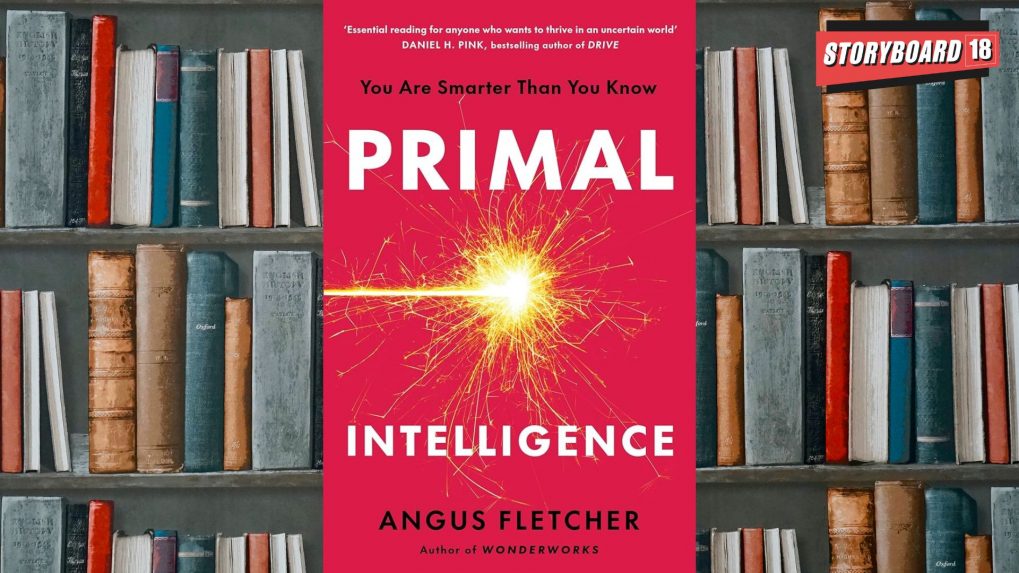Bookstrapping: Primal Intelligence by Dr. Angus Fletcher
In part one of this two-part series, Reeta Ramamurthy Gupta dives into the groundbreaking work of Dr. Angus Fletcher — a unique blend of neuroscience, literature, and leadership — exploring how storytelling activates intuition, emotion, imagination, and common sense.
ADVERTISEMENT
ARE YOU REALLY USING YOUR BRAIN?
In the first of this two-part series, we bring you an insight into the work of Dr. Angus Fletcher, a leading figure in the emerging science of storytelling and cognitive neuroscience.
Dr. Fletcher pursued his passion till it became a career. His rare work brings together neuroscience, literature, and practical leadership. A critical pivot in Fletcher’s career came with his collaboration with U.S. Army Special Operations. Over three years, he worked alongside military leaders to study how narrative thinking and non-logical brain processes influence decision-making under stress. This research led to identifying four cognitive capacities that computers and traditional logic-based education systems overlook: intuition, imagination, commonsense, and emotion—collectively termed “Primal Intelligence.”
Here are five #BookStrapping insights into the book.
1. There is a way of using your brain that activates intuition, imagination, emotion and commonsense. Awakening the powers that folks like Van Gogh, Tesla, Maya Angelou, Steve Jobs and others had access to. How does one do this?
2. Dr. Fletcher’s innovative research focuses on how narrative processes contribute to the brain-he says that the brain thinks in story. This capacity is vital to rapid problem-solving, resilience, and adaptive thinking in unpredictable real-world environments. Primal Intelligence, delivers the results of this research to a broad audience.
3. Dr. Fletcher demonstrates that while logic remains important, the seat of resilience, creativity, and innovation lies in the lesser-studied, emotive side of the human brain. He shares the exercises—originally developed for elite military training and later tested in corporations and classrooms—designed to train and strengthen primal capacities.
4. The big takeaway is that these traits not only set humans apart from AI but are the keystone of thriving in uncertain times. His work ultimately redefines intelligence, urging readers to unlock intuitive, narrative, and emotional strengths to tap into their “hidden genius.
5. Explaining this, Dr Fletcher narrates how Van Gogh knew how to spot ‘exceptional information’. For eg. He worked with ‘colors’ and spotted ‘chromatic pairs’ - when one color helped another color shine more and then used them in his paintings. In the ‘Lilac Bush’ he clashed green leaves with purple flowers. Similarly, Marie Curie noticed something ‘peculiar’- the rays coming from the uranium atom, which led her to discover radioactivity.
Placing emphasis on ‘story’ and ‘narrative cognition’ as the basis for intelligence, Dr Fletcher talks about how even lawyers know that that unless they spoke in story, they couldn’t capture the judge’s attention. Citing Cicero, who used the word ‘narratio’, he says that while the idea of the story seems to be communication, in the eye of the lawyers, it is pure strategy!
Reeta Ramamurthy Gupta is a columnist and bestselling biographer. She is credited with the internationally acclaimed Red Dot Experiment, a decadal six-nation study on how ‘culture impacts communication.’ Asia's first reading coach, you can find her on Instagram @OfficialReetaGupta.
Read More: 'OTP Please's' Vandana Vasudevan: Small retailers feel they must be on Amazon
Read More: World Book Day: Ten reasons why you need to pick up a book today
Read More: Bookstrapping: An excerpt on 'Win The Battle of Your Mind, Scroll Less Read More'


